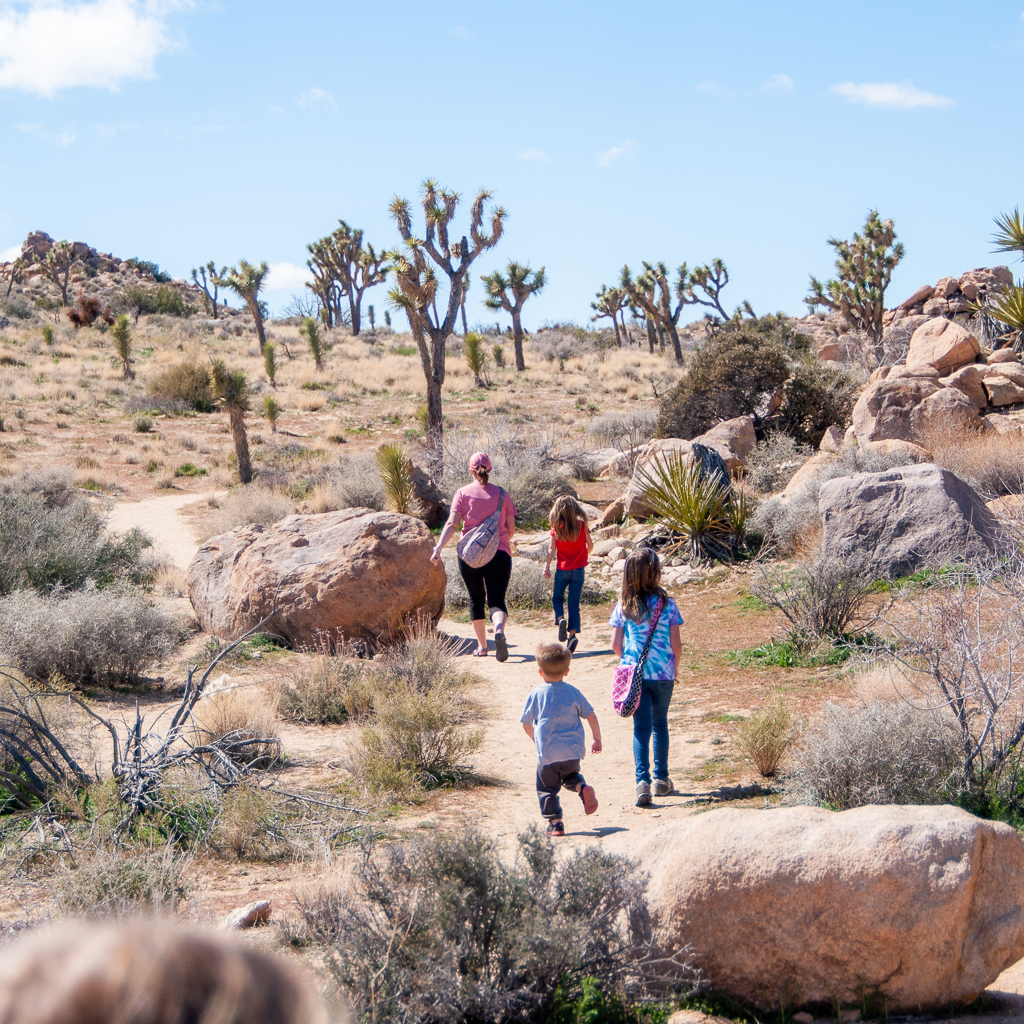
Joshua Tree National Park is located about an hour east of Palm Springs or 2.5 hours east of Los Angeles. It has a vast landscape that is actually made up of two separate deserts so you get quite differing views and landscapes as you progress the park.
On the northwestern side of Joshua Tree National Park, you will find the Mojave desert portion of the park. This is the area where you will see thousands of beautiful Joshua Trees and other desert plants. This part of the national park crosses over the state line and extends into Nevada. On the southeastern side, you will find the Colorado Desert and this side goes all the way into Arizona. We found this part of the park to be beautiful but it doesn’t have as much plant life. Although when we visited in March there were lots of beautiful wildflowers and butterflies everywhere.
There are three main entrances into Joshua Tree National Park but most people will enter through the west entrance near Joshua Tree Village and exit the Cottonwood entrance which is the closest proximity to interstate 10. This lets them hit the main points of the park and exit directly onto the freeway. Our best advice is to stop at the visitors center located in Joshua Tree Village before heading into the park. If you don’t have an annual Parks pass or a golden eagle pass then you will want to buy your entrance ticket here (which is $20 per vehicle). The line to get into Joshua Tree can get long and this can help expedite the process for you to get in. The visitor’s center is also a great place to grab Joshua Tree Junior Ranger booklets for the kiddos. We grabbed Junior Ranger books here on our way in and then turned them in on our way out at the Cottonwood visitors center.
Related Posts
Tips for Visiting Zion with Kids
FREE Things to do in Niagara Falls
Tips for Visiting Joshua Tree National Park
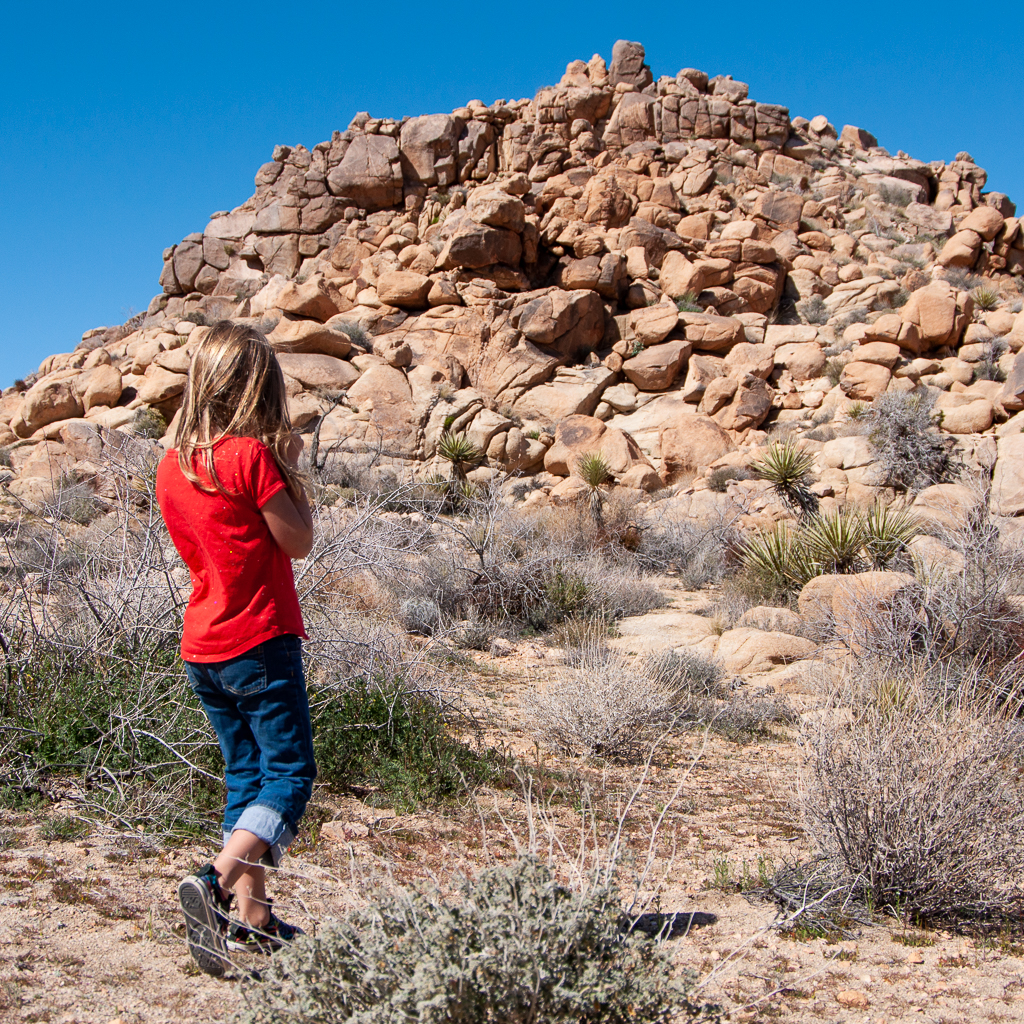
If you plan on bringing your family to Joshua Tree National Park, then some advanced planning is recommended. Follow these tips to make the most of your visit.
Dress Appropriately
The park is located in the desert so weather can vary drastically. We found it to be 10-20 degrees cooler than it was in Palm Springs in March during our Spring visit. You will likely want to throw in a couple of sweatshirts in your car just in case, even if it was warm when you headed towards the park.
One of the biggest draws for families going to Joshua Tree National Park are the opportunities to climb and take easy desert hikes. You will want sturdy climbing and walking shoes as well as layered loose clothing so you can warm-up and cool down as you need.
Bring a Baby Carrier
Joshua Tree is not necessarily a stroller-friendly national park. There are a few trails that are accessible if you are traveling with someone who is in a wheelchair or a stroller. If you have a baby or a toddler you may want to consider bringing a baby hiking backpack or carrier.
Bring Food and Drinks
After the visitor center, there are no food or drinks stops, not even water is available. There are plenty of outhouses but no potable water. You want to make sure you bring more than enough food and pack a cooler of drinks and water for your family. When you are in a desert, it is easy to get dehydrated without noticing. I would suggest bringing some sports drinks and bring more than you need.
Bring Sunscreen
The higher in Joshua Tree elevation makes you more susceptible and vulnerable to the sun. Bring some sunscreen to protect your family.
Pack a First Aid Kit
If you have it you most likely won’t need it. But the kids will be climbing, running, and passing by needly cactus so you want to make sure it has plenty of bandaids, Neosporin, anti-septic cleaning wipes, and tweezers handy just in case.
Stay in Touch
There is little to no cell reception in Joshua Tree National Park. It’s a great way to unplug and focus on your family but if you have a job or people in your life you need to stay in touch with you may want to let them know ahead of time you will be difficult to reach.
Things to See in Joshua Tree National Park
Here are some of our favorite things to do in Joshua Tree for families.
Hidden Valley
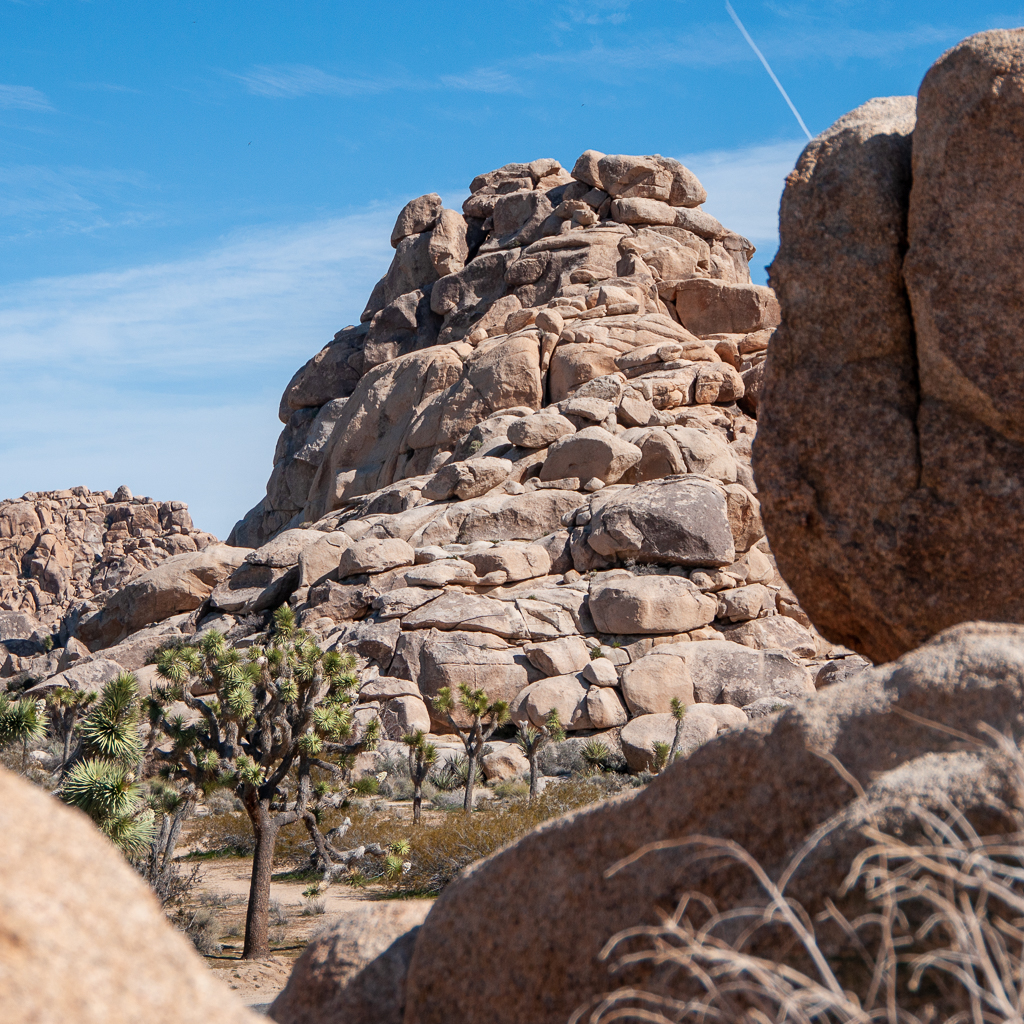
This is a very easy 1-mile loop that is perfect for families with little ones and toddlers. It’s located fairly close to the north and west entrances of the park and is a popular spot in the national park. The scenery includes a wide spectacle of boulders and Joshua Trees. Kids will absolutely love to climb on the rocks and enjoy the beautiful views.
Barker Dam
Another popular hike for families, especially those with younger kids, Barker Dam is a man-made dam that showcases the only spot you will find water in Joshua Tree. It’s an easy and quick 1.2-mile hike but one that is worth the add to your itinerary.
Key View
This is a great place to detour off the main road and take a little drive. You may feel like you have stepped into another world with the vast amount of Joshua Trees you drive through. It is about a 40-minute detour off the main road but once you reach Key View you get to view the actual San Andreas Fault!
Skull Rock
One of the best things you can do in Joshua Tree National Park is just to plan on a lot of driving and stopping whenever you feel you want to get out and stretch your legs or go for a quick hike or climb. One of these places is Skull Rock. Our kids got a kick out this rock that is shaped like a skull.
Cholla Cactus Garden
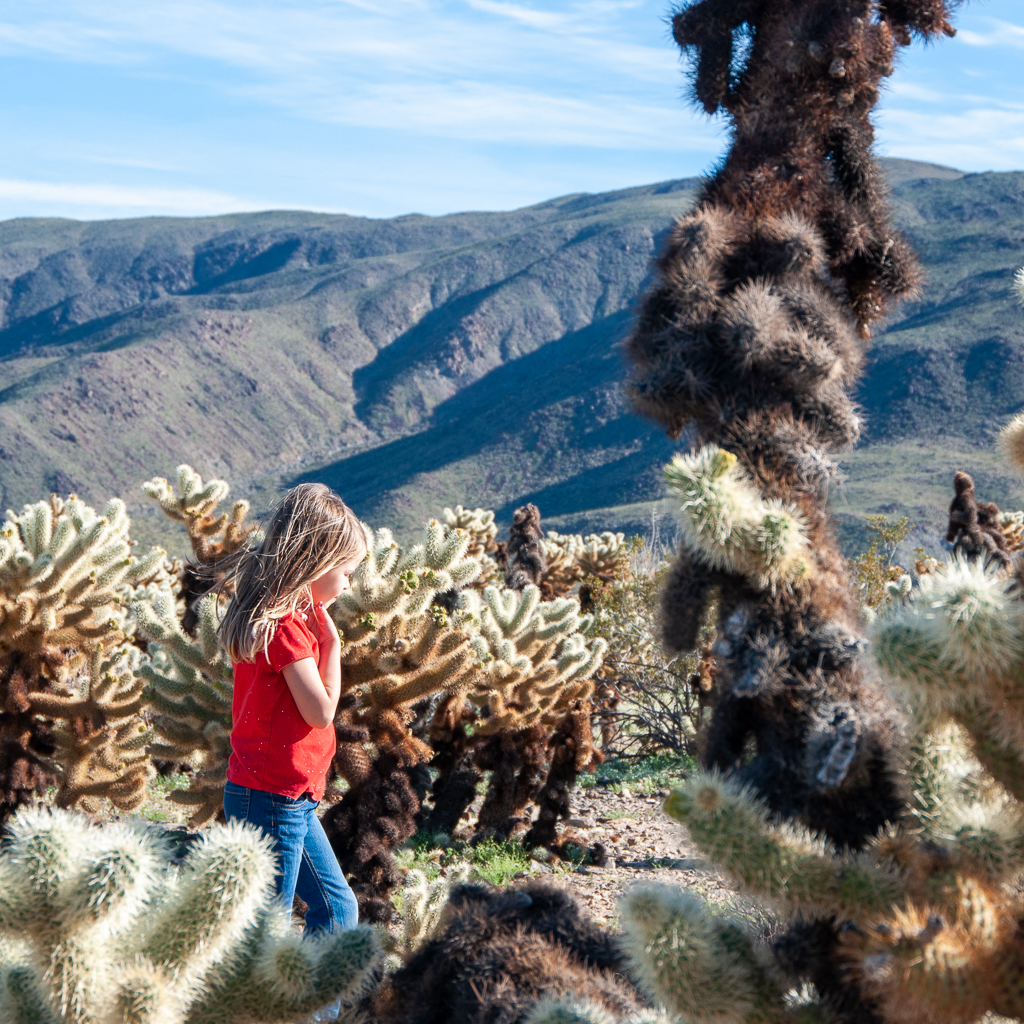
Cholla Cactus Garden is a favorite among most families visiting Joshua Tree National Park and is a fun little surprise. It’s about the midway point between the two separate deserts and it’s really where the two landscapes start to shift from higher to lower elevation. The garden has a little boardwalk that passes through these beautiful cactus. Pay very close attention to those little ones because these cactus are no joke. They may look innocent but one got stuck to Reid’s leg and it painful to remove it.
Some helpful things to know about Joshua Tree National Park
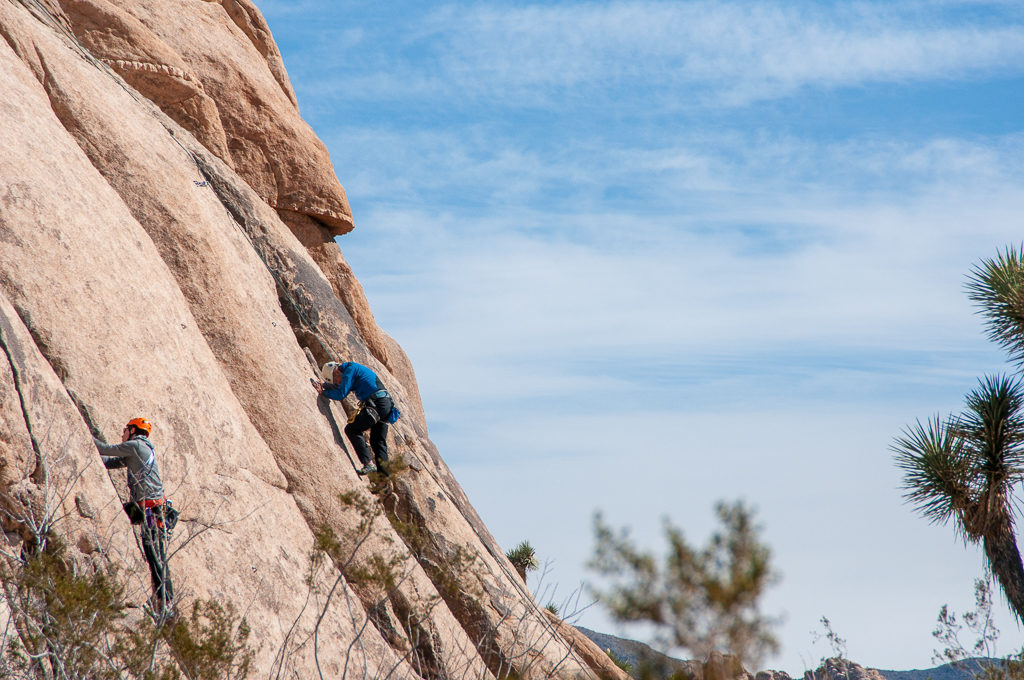
Don’t Mess with the Joshua Trees
Don’t mess with the Joshua Trees. While they are beautiful and unique, the park has strict rules about touching or climbing on these special trees. They are a protected species and you can get in a lot of trouble for hanging on one of them, it’s not worth the perfect Instagram shot.
Watch Where You Step
Be careful in the cactus garden and watch where you are walking. Even if you brush up against one of these you will regret it instantly. Reid was busy taking photos and barely brushed against one. He paid the price.
Visit When it is Cool

Come in the spring for cooler temperatures and beautiful wildflowers and to see thousands of butterflies. We came just before spring break so the crowds were low and the temperatures were comfortable. Spring usually means wildflowers as well. Later in the fall is another comfortable time of year to visit.
Stay for Sunset
Make plans to stay for sunset. We wore our kids out the day we took them to see Joshua Tree with hikes, climbing and lots of driving and with promises of In-n-Out burger for dinner they were ready to leave. However, I have heard from multiple sources that the sunsets at Joshua Tree National Park are stunning and worthy of planning a visit around.
So if you can swing it to stay for sunset you won’t be disappointed. Great viewing spots for Sunsets? Keys View and Cholla Cactus Garden.
Things to watch out for:
This is a desert so while hiking watch out for snakes, scorpions, and tarantulas. My kids were actually bummed we didn’t see any of these on any of our hikes.

We have already mentioned it a few times but the cactus, Joshua Trees and also Yuca plants can be harmful. Be careful if you want to get close. They are known for having needles that can be painful to the touch.
Being in a desert you need to be extra mindful of dehydration and sun exposure. This can especially sneak up on younger children and elderly people. Make sure everyone covers up and drinks up on your trip!
Have you ever been to Joshua Tree National Park? What tips do you have for families?
Pin This
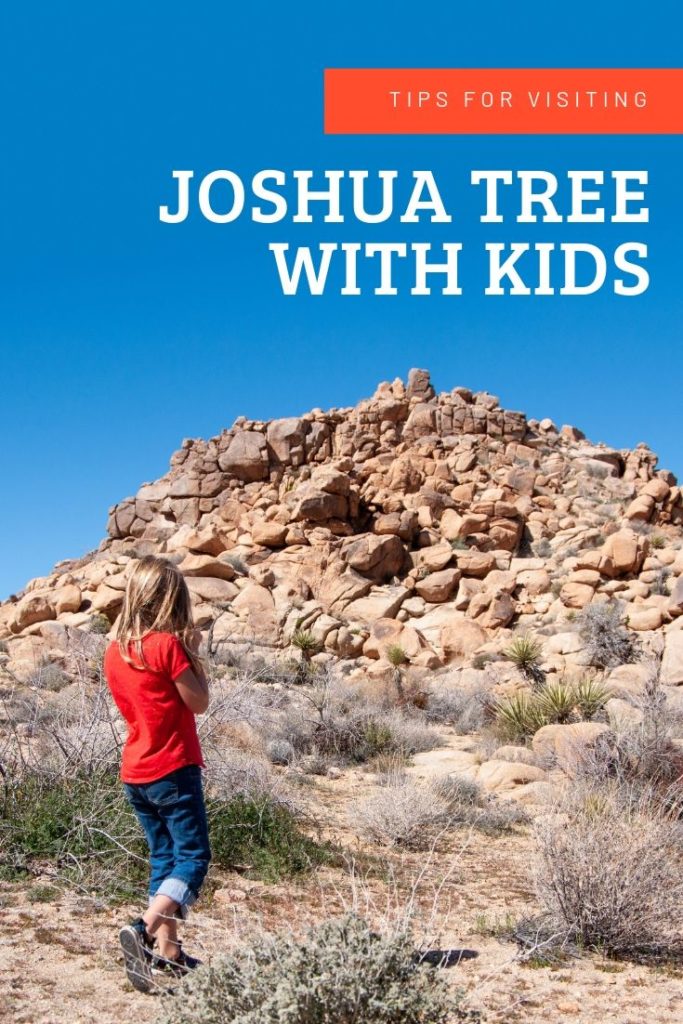


Comments 1
Pingback: Visiting Zion National Park with Kids | Dotting the Map